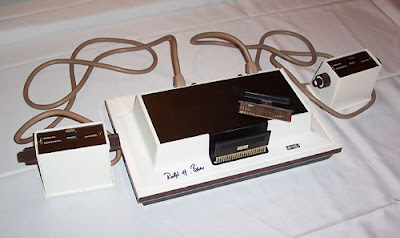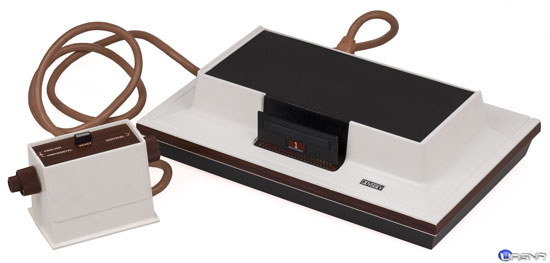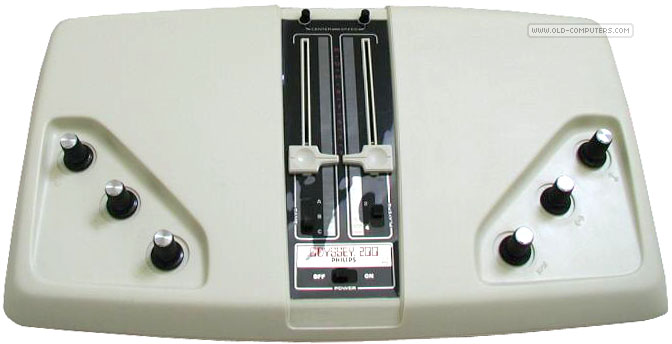

Given the assignment of building the best TV system in the world, he submitted the idea that the TV should include innovative concepts - one of which was the ability to play games. Ralph first came up with the idea for video games in 1951 when working at an early TV manufacturer by the name of Loral. While many consider Nolan Bushnell, the enigmatic founder of Atari, to be the father of the video games, this title should actually go to Baer. The Odyssey was invented by an electrical engineer named Ralph Baer. While the home version of Pong is the system most often remembered by video game players who had their first experience in the '70s, the original home video game system (and the system responsible for inspiring both Atari's coin-op and home versions of Pong) was the Magnavox Odyssey. The first Magnavox system to offer digital on-screen was the Odyssey 300 in 1976.The very first videogame console! What? I thought that was Atari's Pong? Nope. Nevertheless, on-screen scoring was added in later systems although the first attempts used archaic graphics. On-screen scoring would have required additional components, which would have increased the cost of the system. In fact, this was just a question of technology. This could seem strange compared to the first Atari PONG systems which already had digital on-screen scoring. The serve couldn’t be changed: it was automatic. There was no digital on-screen scoring: the players marked their score using two little plastic cursors on the system. The knobs were fixed: there were no detachable controllers yet.

The Odyssey 100 was very basic and didn’t have the common features of the million-seller PONG systems of the next years. A little piezzo beeper was used for the few beeps of the games, and each player controlled the game using three knobs (one for moving vertically, one for moving horizontally, and one for the “english” effect which modified the trajectory of the ball to ‘fake’ the opponent). Two knobs were used to adjust the game: one to center the vertical line and one to set the ball speed. It was formed of two paddles, a vertical line and a ball. A simple switch selected the games, and the system was either powered by six batteries, or by an AC adaptor (such power supplies were widely used by other systems). It did not use cartridges and played two games: TENNIS and HOCKEY.

The Odyssey 100 used discrete components and four Texas Instruments chips. Thus the Odyssey 100 was released the same year. The chip was ready in August 1975, but Magnavox already decided that TI would make the multi-chip design. In the meantime, National Semiconductor proposed a single-chip project which would be ready for January / February 1975. He kept worrying about his idea until may 1974 when Magnavox signed an agreement with Texas Instruments for the design of the chips.Īlthough TI promised a delivery for January 1975, Magnavox went ahead and made a same design using discrete components, should TI fail to deliver the chips. He tracked several semiconductor houses (General Instruments (GI), Texas Instruments (TI), MOSTechnology (MOSTek) and others) to study the feasibility of his new idea. If Atari started to sell a whole range of PONG systems in 1975, Magnavox (the originator of home video game systems) also started a new range of systems in 1975, the first of which was a much simpler version of the 1972 Odyssey: the Odyssey 100.īack in 1973, Ralph Baer tried to add new features to his Odyssey (sound, extra components on the cartridges to add more visual effects, etc), and wondered if the new technologies would allow integrating a whole Odyssey in one or more simple integrated circuits.


 0 kommentar(er)
0 kommentar(er)
